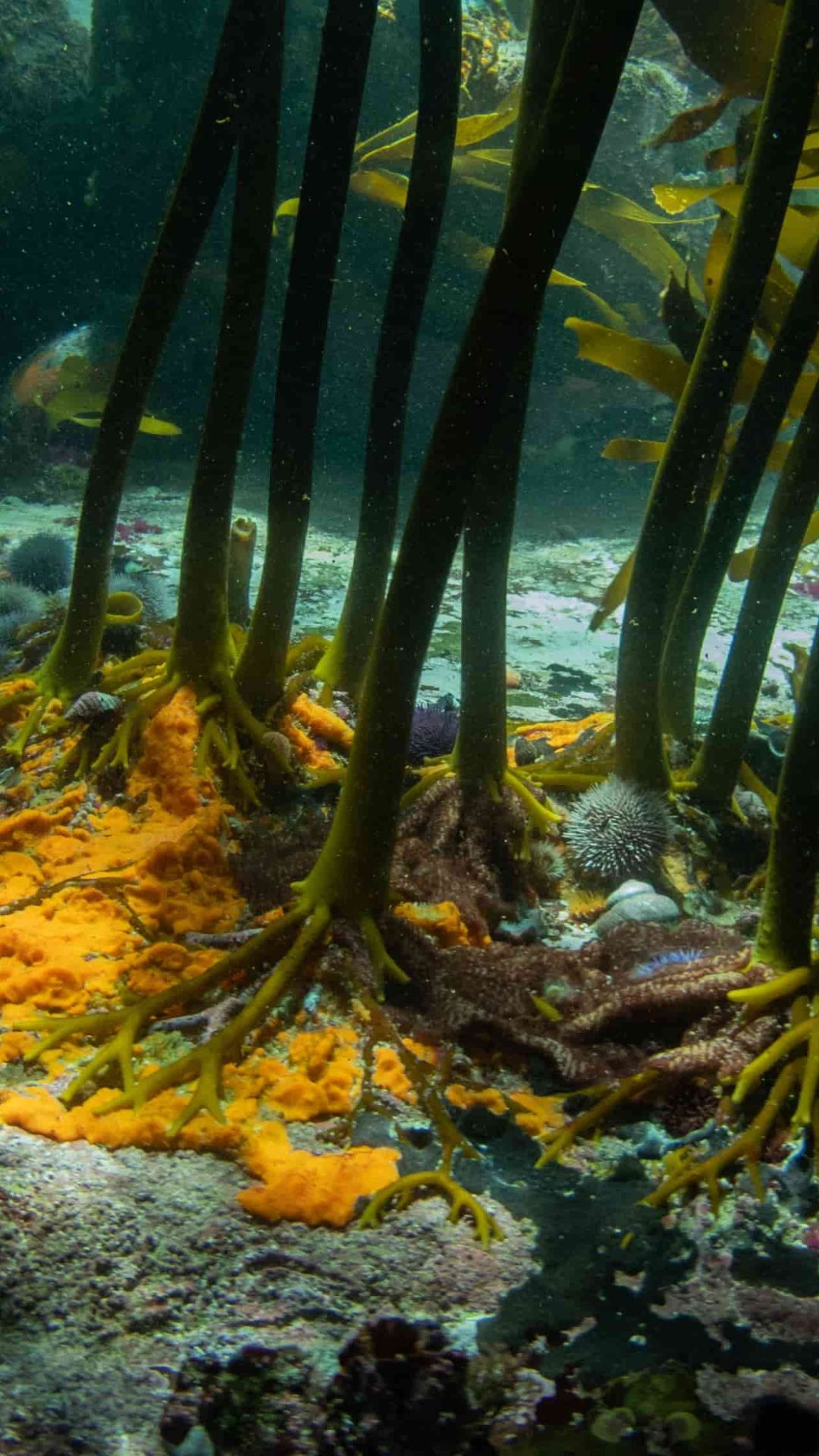How Kelp Provides Life
Jannes Landschoff

The Bamboo kelp (aka Sea bamboo) gives a lot more to this world, and a lot of it remains unseen unless we look very closely. Diving into this underwater wonder world helps to realise that there is a great depth to this kelp forest. It is not just some algae that float in the distance. The plants create a submerged forest that gives shelter to fish and invertebrate species in multiple ways. The leaves of the kelp, also called the fronds, have a fine coverage of microscopic algae, fungi, bacteria and viruses, all eaten and consumed by a delicate community. Young limpets use the fronds to graze on. Because it keeps them safe from ground predators, we suspect that the very young octopuses live in this canopy and specifically target juvenile Kelp limpets. And then there are the stipes of the kelps, another similar but also different micro-habitat. As the stems of the kelp, stipes are stronger than the fronds, so more and bigger animals can live on them. Often they are overgrown by a plethora of life forms. And of course there is all the surrounding water in which so many organisms thrive! By creating shelter through dampening the impacts of the waves and providing structure, never mind the food they give directly, the kelps are a massive gift from nature for all the creatures and for us.
But perhaps the kelps biggest secret lies somewhere else. Unlike land plants, kelps do not need roots. All the nutrients they require for growth come not from soil, but are taken up directly from the surrounding water. And yet kelps have and need a structure that anchors them to the rocks. These anchors are called ‘holdfasts’ and consist of hundreds of thin, root-like structures or ‘haptera’. By growing over each other they create a strong hold against the waves, while also leaving tiny gaps in between in which small animals can find a home. I have only recently started to fully appreciate the significance of this micro-habitat.

Diving in the Great African Seaforest I always noticed how different those holdfasts can be. I often wondered what lives inside them. Together with a science team from Stellenbosch University I have started research collaborations that ask how many species live in there, how different holdfasts are to each other, and how they vary at different sites. For the 1001 Seaforest Species project we want to understand how diverse the Great African Seaforest really is to better protect it. How are the species distributed and what factors drive where they live? I am extremely fortunate to work with young and passionates students, with other emerging researchers, and also to be supported by many experienced marine biologists to build this important baseline knowledge. I believe that our mutual research efforts help to motivate for many pressing conservation questions.
From preliminary results we can already get a sense of the hyper-diverse community that lives in the kelp holdfasts. Personally I am repeatedly shocked at what numbers of species and animals we are finding. In just one holdfast we have found more than 50 different species of only the small crustaceans, such as amphipods and isopods! Never mind sponges, hydroids, worms…. and so many more. As a biologist I should know how diverse and incredible our planet is. I should be used to numbers like this by now, but because the diversity can be so overwhelming, you repeatedly have moments when you realise that all you saw before was just the tip of the iceberg.

The only way to build this important biodiversity knowledge thoroughly is to do it slowly, literally one species at the time. 1001 Seaforest Species is a massive support structure to build capacity for this ambitious task. I strongly believe that those species that secretly live out there have a lot to teach us. Looking at kelp holdfast ecology gives us a completely different perspective, because at the base of the seaforest there is a special holdfast home for millions of creatures! There is still so much we don’t yet know! And I feel that the more we uncover in this secret world, the more we get taught that we humans need to look after the Great African Seaforest.
acknowledgements
To inform the 1001 Seaforest Species project funded through the Save Our Seas Foundation, this work forms part of a larger research collaboration between Stellenbosch University and Sea Change Project. Running costs for student projects are covered through the NRF-FBIP Small Grant No. FBIS22101863331 “Holdfast-associated invertebrate diversity in South Africa’s kelp forests”, principal grant holder Dr. Nasreen Peer (Stellenbosch University), co-investigators Dr. Jannes Landschoff (Stellenbosch University) and Dr. Koebraa Peters (Cape Peninsula University of Technology)